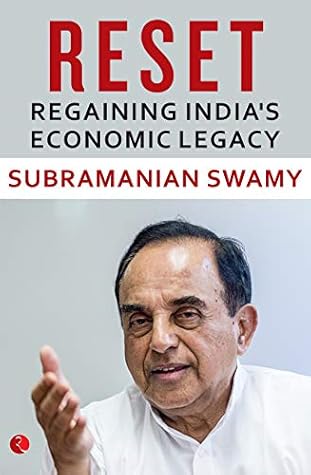More on this book
Kindle Notes & Highlights
Read between
November 12 - November 26, 2019
By bleeding agriculture to the bone, exporting and draining national resources estimated at $71 trillion at current prices, and by blocking native innovation, the British rule set India two centuries back in development. India thus missed the Industrial Revolution.
High land tax by itself does not obstruct agricultural development. Japan, under the reign of Emperor Meiji, had much higher taxes than India, but the mobilized resources returned to agricultural colleges and research stations, and in bettering agricultural techniques. This did not happen in India because of the naturally limited and negative role the British saw for themselves in the ‘development’ of India. Hence, under colonialism, there was a severe regression in the institutional framework of Indian agriculture.
Had the British never come, it is plausible that a government of Marathas led by the Peshwas would have imported the railway system from Britain commercially, as the rest of Europe did, and put India on the path of a development war with France and Germany. This counterfactual history, which needs to be debated, would have been largely positive for Indians on its own, but could not, because of the favourable circumstances in which the foreigner found himself in India. It has been less positive in China for much the same reason.
It was only after 1870 that the need to industrialize received widespread acceptance by Indians. Around this time, India was institutionally ready for modern economic growth, if the government of the day had wanted it. If it had, our economic history would have been entirely different and free of poverty today. So why did the government resist native initiative in these areas? Why were British investments confined to export and export-related activities? The answer is obvious, and its impact is clear. India was made to miss the bus and has been running behind ever since to catch it.
Agriculture, which employed about 70 per cent of the labour force, had received declining real public investment during the 1980s, at the alarming rate of minus 2 per cent per year. In other words, agriculture was in no position to absorb more labour due to the lack of adequate investment, while the organized sector in urban areas, which received a lion’s share of the public investment, failed to generate sufficient employment to absorb the surplus labour.
However, an important reason for the failure of the concept that had been favoured by Nehru and the Leftists can be traced to India’s national ethos, which is based on individualism and has its roots in a composite Hindu culture. The social consciousness that prevails in such an ethos is one that seeks harmony with nature.
The huge squandering of public resources the PSUs represented was a criminal breach of the people’s trust.
Thus, without doubt, the growth rate of the economy (during 2014–19), calculated on a proper index number-based GDP, has declined over the last four financial years. The annual rate for 2019–20 is, for obvious reasons, not available, but my guess is that the downward trend has not abated.
India missed the Industrial Revolution in the nineteenth century, and then lost out in the race for globalization in the twentieth century due to the adoption of the command economy framework, and now is faced with the threat of missing the knowledge and innovation revolution of the twenty-first century too.
Thus, 99.3 per cent of the currency coming back implies that even though there was 40 per cent black money in the economy, tax evaders and criminals never held much of this wealth in cash holdings.
While it is undeniable—and a reality—that the economy is headed for a serious crisis through an agonizing tailspin since 2016, yet the situation is retrievable. Can a mere course correction today rectify and rescue the economy from a crash? The answer is, yes, of course, but only if there are short-term and long-term economic prescriptions to be followed.
Moreover, millions of job opportunities can be created by building new cities. The creation of new cities will be instrumental in absorbing the surplus rural workforce into the construction sector as well as providing aspirational jobs to the educated people in the service sector.
We can, of course, no more be satisfied with a 7–9 per cent growth rate if we want to become an economically developed country by 2040, and overtake China before 2030. The Indian economy, thus, needs to grow at 10+ per cent per year for the next ten years to achieve full employment and for India’s GDP to overtake China’s and pave the way to forming a global economic triumvirate with the US and China by 2050.
But my thesis’s underpinning was the core concept that material economic growth had to be harmonized with spiritual advancement. In other words, stand-alone materialistic progress, as in the West, was unsuitable for India.
Thus, in capitalism, under laissez faire, although man has technical freedom, because the development strategy is to give primacy to technology, implicitly man becomes subservient to the system.


